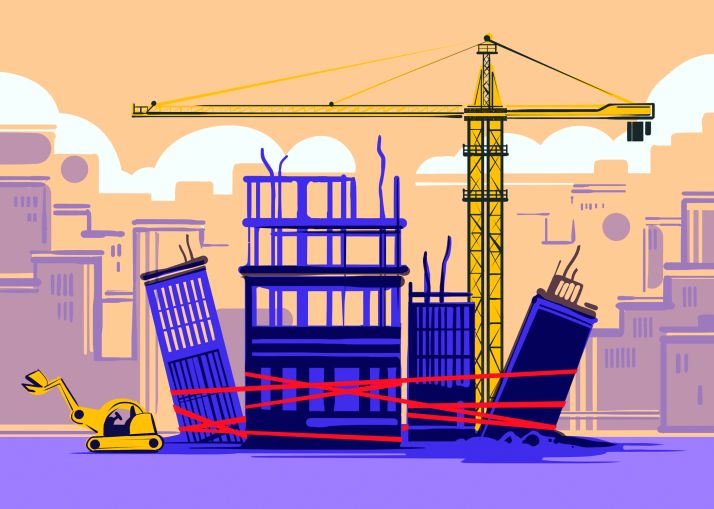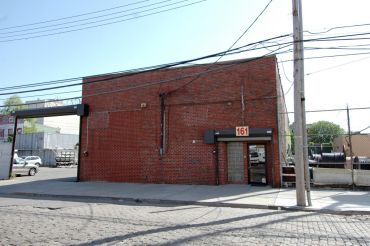NYC’s Department of Buildings Struggles With Budget Cuts, Staff Vacancy
By Rebecca Baird-Remba April 26, 2023 7:00 am
reprints
As deaths on construction sites reach their highest level in four years, the New York City Department of Buildings remains dramatically understaffed and will have to trim a further 4 percent of its budget, as it grapples with across-the-board cuts imposed by Mayor Eric Adams.
The department is conducting fewer job site inspections, issuing fewer code violations and auditing fewer certified permit applications, raising questions about whether it can effectively enforce safety regulations with a decimated workforce and nearly 300 unfilled jobs. It’s also struggling to match the often higher salaries, better benefits and more remote-work-friendly policies in the private sector.
Currently, the Department of Buildings has a job vacancy rate of 16 percent, or 287 unfilled positions out of a budgeted headcount of 1,884 jobs, according to the city’s Independent Budget Office. Eleven construction workers also died on job sites throughout the five boroughs last year, marking the deadliest year in the industry since before the pandemic in 2019, according to a DOB report released earlier this month. Another 554 workers were injured on construction sites in 2022.
“The Department is committed to continuing aggressive year-round recruitment efforts in an effort to get more construction professionals to join our ranks,” a DOB spokesman said in a statement. “Despite a current vacancy rate of 10% in our inspection units, we have been conducting all required inspections, while improving our service levels and response times.”
The spokesman noted that the department had received fewer inspection requests last year compared to 2021 and 2020, which is why the reported number of inspections in city budget documents was lower. All told, buildings inspectors conducted about 300,000 site visits last year, including complaint inspections and enforcement sweeps.
Fatalities are a difficult number to interpret, because the number of deaths and injuries remains below 2019’s figure of 594 injuries and 14 deaths. However, DOB inspectors also issued 51,909 construction safety violations in 2022, which was nearly 31,000 fewer violations than 2021’s 80,460 violations and lower than 2020’s 68,496. Inspectors also issued fewer stop-work orders — 9,747 of them — in 2022, down from 10,414 in 2021 and 11,313 in 2020.
The department is also conducting fewer inspections and issuing violations at a lower rate than previous years. A DOB spokesperson pointed Commercial Observer to the agency’s focus on inspecting larger construction sites, where it has doubled the number of inspections over the past two years to 21,000.
“Are they getting out to where they need to be getting to at the right rate?” asked Ana Champeny, an analyst at the nonprofit watchdog Citizens Budget Commission. “How do you inspect the most potentially at-risk construction projects? If you were doing fewer of them but you were getting more violations, then maybe you’re better targeting where there’s risky behavior.”
The department, for its part, claims that new safety education programs and regulations — including requiring superintendents to supervise no more than five job sites at a time (down from 10) — mean that fewer violations and stop-work orders are necessary. In December, following four separate job site deaths in two months, DOB launched a new construction safety campaign that includes “citywide enforcement sweeps and educational outreach to active building construction work sites, regardless of size,” according to the DOB report from earlier this month. Between December and early April, the agency visited 7,800 sites and issued 4,841 code violations and 1,277 stop-work orders.
“The concern is that if you have insufficient staff, you have to make decisions about how you allocate them,” said Champeny. “You aren’t able to do things as expeditiously.”
The city building agency is also auditing just 2 percent of professionally certified jobs filed by architects and engineers, down from 12 percent of jobs in 2020, according to Champeny’s analysis of city budget documents.
“There’s a significant share of jobs where you’re relying on the engineer or architect to be in compliance with building codes,” she said. “They’re doing fewer of these audits, but the share of audits with problems — 45 percent — hasn’t changed. How many other jobs are being professionally certified that are out of compliance?”
DOB says that audits for code compliance on professionally certified applications aren’t really necessary anymore, because the agency’s new filing system—DOB NOW—forces architects and engineers to submit more complete building applications. Under the old filing system—which was often done with paper plans and applications—engineers would leave parts of the application blank if they knew the project wouldn’t comply with code. The new online filing system helps close that loophole.
The department now also takes significantly longer to review new plans for major renovations, with the average review time rising from five days in 2020 to 18 days in 2022. Average review time for new building plans has risen from five days to nine in the same period.
However, a DOB spokesman pointed out that these numbers only apply to filings made in person at the borough office, which account for a fairly small number of the 147,000 plan reviews the agency handled last year. Major renovation filings submitted to DOB’s new online system, DOB NOW, have the fastest turnaround time, dropping from nine days to six over the past year. Meanwhile, review times for the same kind of filings in the DOB’s older online system increased, from 5 days in 2020 to just over 10 days in 2022.
Champeny added that the DOB has struggled with extremely high job vacancies throughout the pandemic, with 24 percent of its budgeted positions unfilled before the last round of budget cuts a year ago. Like many agencies, it struggles to compete with higher-paying jobs in the private sector that may allow more work-from-home days. The city did strike a tentative deal in February with District Council 37, the largest municipal union in the five boroughs, to allow some hybrid work beginning in June.
“That’s definitely a factor for them, because they employ individuals in construction and real estate who have highly marketable skills in the private sector where they can have more flexibility and higher pay,” explained Champeny.
Previous rounds of budget cuts under Mayor Adams have involved eliminating vacant positions in order to reduce overall costs. However, there is such a high rate of vacancy and attrition among DOB inspectors that the city budget office exempted those positions from the more dramatic cuts. So the department may have to figure out other ways to slash its costs by 4 percent. Champeny said that DOB could reduce costs by combining its two parallel permitting systems: its legacy Building Information System (BIS) and its newer option, DOB NOW.
“I don’t know what the timeline is to transition from DOB BIS to DOB NOW,” she said. “But it really is not intuitive or easy to manage when you’ve got data in two systems. Running two parallel systems is never the most efficient way to do things.”
Brendan Cheney, a policy analyst at the nonprofit New York Housing Conference (NYHC), was even more blunt about DOB’s shortcomings.
“You look at DOB stats and it looks like inspections are down,” he said. “We’re already seeing impacts from the staffing shortage and budget cuts, and further cuts would just make that worse.”
DOB currently has about 1,551 people on staff, lagging its December 2019 headcount of 1,654 workers. It also has fewer inspectors, employing 540 in December 2019 compared to 500 in January. Cheney noted that the department cut 94 positions in January.
DOB is far from the only housing and construction agency with a large number of empty jobs. The city’s Human Resources Administration has 1,726 unfilled positions — 14 percent vacancy — while the city’s Department of Housing Preservation and Development is short 405 jobs, or 15 percent of its budgeted headcount, per NYHC.
“We’re advocating for protecting these agencies from cuts because of how important their work is in terms of addressing the housing crisis,” said Cheney. “It’s clear the staffing shortage is affecting services at DOB, HRA, HPD, DHS. There’s clearly positions in housing agencies that are doing a lot of the work and should be protected.”
Together with 76 other housing organizations, NYHC penned a letter last week to the mayor and his budget director, Jacques Jiha, opposing cuts to the city’s buildings, planning, housing development and social services agencies.
“Ongoing staffing and resource deficits at key housing agencies have been plaguing New York City since the pandemic began, including during your administration,” the letter noted. “If these agencies are not exempted, the consequences will be severe for countless New Yorkers across the five boroughs. These cuts will extend affordable housing construction timelines and project approvals, delay housing assistance, and ultimately prevent New Yorkers from accessing the safe, affordable housing they deserve. This is an unacceptable outcome.”
Update: This post has been updated to clarify some of the statistics regarding DOB inspections and plan review times.
Rebecca Baird-Remba can be reached at rbairdremba@commercialobserver.com.


